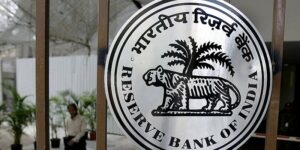
The will soon come out with a regulatory framework for digital loan aggregators, as it notes concerns of certain loan products harming customers’ interest.
Web-aggregators of loan products (WALP), as termed by the RBI, refers to electronic platforms that enable borrowers to compare and choose the best available option to avail themselves of loan from one of the available lenders. These platforms are restricted to offering aggregation services by tying up with multiple lenders and do not undertake lending themselves.
Previously, the central bank had introduced a regulatory framework for overall digital lending in August last year.
“Based on the recommendation of the Working Group, it has been decided to bring such loan aggregation services offered by the Lending Service Providers (LSPs) under a comprehensive regulatory framework. The framework will focus on enhancing the transparency in the operations of WALPs, increase customer centricity and enable the borrowers to make informed choices,” the RBI said.
This move is expected to enhance customer centricity and transparency in digital lending, said Shaktikanta Das, Governor of RBI, in his monetary policy statement.
Framework for connected lending
The central bank will also come out with a regulatory framework on connected lending for banks and NBFCs.
Connected lending is a system wherein the owner of a bank gives their company or connected parties (his friends and families) loans at lesser rates of interest or at favourable terms and conditions.
Simply put, if a company or a stakeholder owns a bank, they are in a position to influence and can lend themselves money at a lower rate of interest for a risky project, “if the bank does not maintain an arm’s length relationship with such borrowers”.
“Such lending can involve moral hazard issues leading to compromise in pricing and credit management. The extant guidelines on the issue are limited in scope and are not applicable uniformly to all regulated entities,” read the RBI’s statement on Developmental and Regulatory Policies, issued alongside the Monetary Policy Committee meet on Friday.
The RBI will soon issue a draft circular around a unified framework for public comments.
The move follows the regulator’s tough stance on growing unsecured retail loans (personal and credit cards) given out by banks and NBFCs.
To tackle the same, it increased the risk weight—the percentage of capital that banks and NBFCs need to set aside to cover potential losses on loans—on such loans by 25%. This is expected to push banks and NBFCs to become selective on doling out credit in the unsecured space, directly or via their partner fintechs (digital lending apps).
A fintech repository
Meanwhile, the central bank wants to keep itself updated on all the developments taking place in the fintech sector, including the nature of their activities, for it to frame better policies.
A ‘Fintech Repository’ has been proposed for this reason, wherein fintech firms will be encouraged to provide relevant information voluntarily to the repository. This is expected to aid in designing appropriate policy approaches.
The repository will be operationalised by the Reserve Bank Innovation Hub in April 2024 or earlier.
“Today, fintechs are using emerging technologies like Distributed Ledger Technology, AI/ML. For better understanding of the developments in the ecosystem with an objective to appropriately support the sector, it is proposed to set up a repository for capturing essential information about fintechs, encompassing their activities, products, technology stack, financial information etc,” said the RBI.
Edited by Swetha Kannan







![Read more about the article [Funding alert] Zomato raises $250M from Tiger Global, Kora, others](https://blog.digitalsevaa.com/wp-content/uploads/2021/02/Deepinder-Goyal-zomato-featured-image-300x150.png)


